
38 minute read
Introduction to the family
by mollusc
The Salter Family
—1— Introduction to the family
Advertisement
Before proceeding I should give some family background and establish some credentials. It would seem from the records that my maternal family came from Hampshire and Sussex whereas my paternal roots were in East London and Essex. A brief background to both is given as this can act as a good basis for further research, should any member of the family desire.
My mother, Mildred Lucy Salter, was born at Fir Croft Lodge, Patcham, near Brighton, on 5 August 1900. She was the daughter of William Charles Salter, a coachman, born on 6 June 1869 in Shanklin who was, in turn, the son of Edwin Salter, general labourer and Elizabeth Salter, formerly Dash. My mother’s mother was also Elizabeth Salter who was born on 7 July 1870 at19 Bullar Street, Southampton. Her father was Henry Goodenough Blatch described as a dock labourer and her mother was Ellen Blatch, formerly Grist.
My maternal grandparents were married on 15 September 1898 in St. Luke’s Church, Southampton, and it is interesting to note that my grandmother’s father, Henry Goodenough Blatch was listed as a mariner (deceased). I do have an impressive memorial card “In Affectionate Remembrance of Henry G. Blatch, The Beloved Husband of Ellen Blatch Who was Drowned at Sea, March 3rd 1885, Age 42 Years”. This is followed by the verse:–
A light is from our household gone, A voice we loved is stilled, A place is vacant on our hearth, Which never can be filled
I do know that there were a lot of Blatches and my mother used to say that many of them were connected with the sea or shipbuilding. Some served in the Royal Navy and others on other ships. She spoke of one, Eddy, who was a captain but I have no details. Several were alive when I was young but I don’t remember meeting them. During the war (1939—45), we used to stay with one uncle and aunt who lived at Bitterne Park, Southampton. In fact, we were actually staying there when VJ Day was announced – this was the final stage of the victory over Japan.
My maternal grandfather, William Charles Salter, died when I was five months old, on 19 June 1931, aged 62 years. I believe he was in hospital for some time as my mother told me that only once did he hold his grandson. As was customary, a memorial card was produced (photo on next page).
I know that my mother was very close to her father and she missed him very much. His last job was in charge of all the horses at the United Dairies depot in High Road, Ilford. He was very fond of horses (photo on next page). I believe there were about 60 or so. They lived at 2, Sylvan Road, Ilford where they owned the Tyne Hall Dairy.
After his death, my maternal grandmother lived another 11 years, much of it with her bachelor son, my Uncle Will. We used to visit them at Rayner’s Lane, Harrow, where they had a flat above some shops almost opposite the Underground Station. The place was fairly sparse and there were tea chests packed with glass and china. They were always going to move! My Uncle Will owned two ukuleles which he played quite badly. They also had white Sealyham dogs. I have no idea what he did for work, if anything, but around 1940 he
1931 my maternal grandfather – I was 5 months old
Coach driver is William Charles Salter, my maternal grandfather, driving his employers, the family Hoch

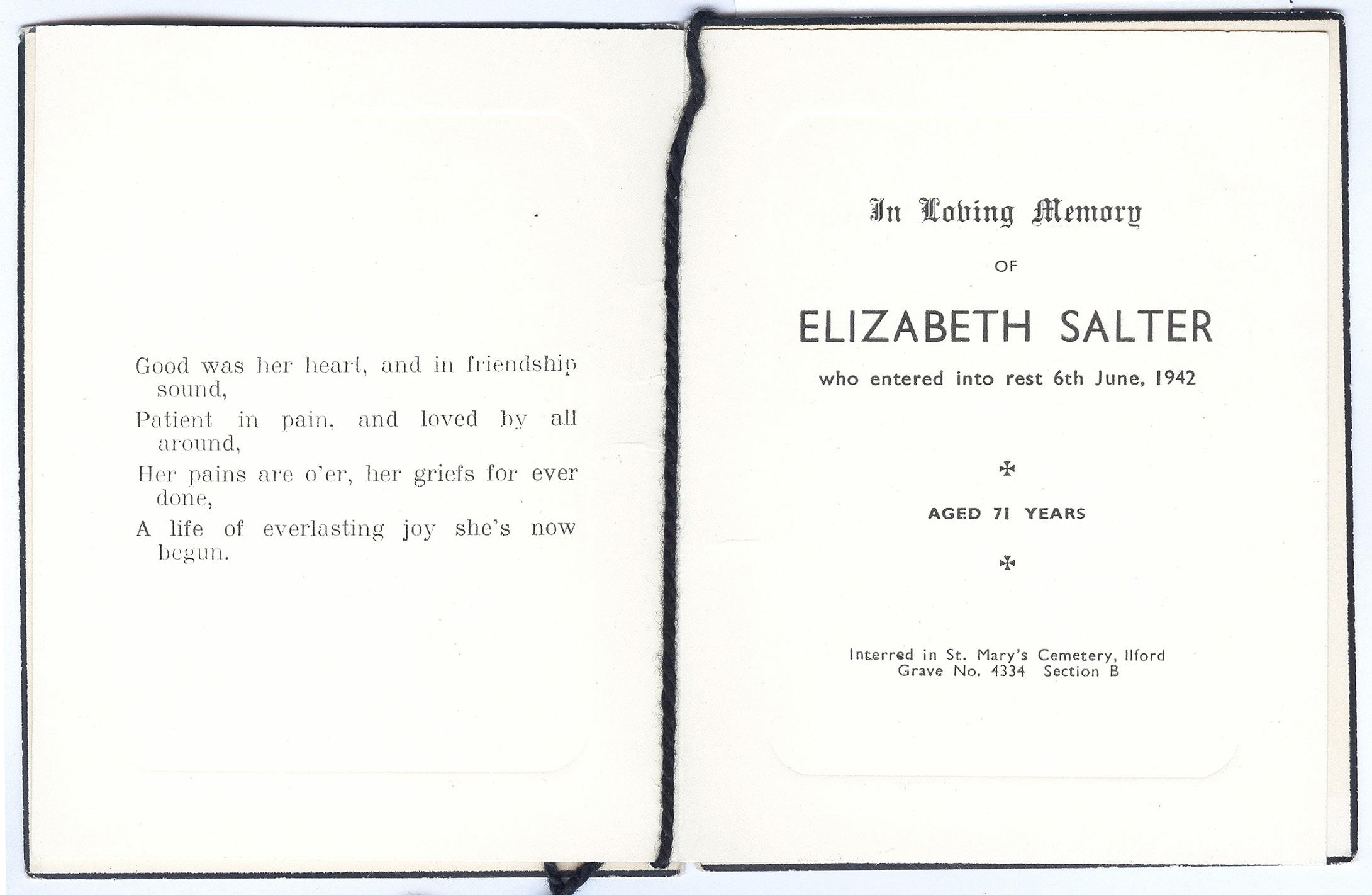
found a Welsh girlfriend, got married and in no time they had three children. They visited us on a couple of occasions and I remember carrying the firstborn, Graham, from our house to the bus stop when he was a month old. My grandmother never got over the shock of the marriage and obviously disapproved of his choice. My mother was never close to her brother and after he died we lost touch with the family.
I have few memories of my grandmother, but I do know that she always referred to me as “Ellis” – that is the spelling. I don’t know whether she didn’t like Eric or couldn’t pronounce it, but it was not only used verbally but written in Christmas and birthday cards. Grandmother used to pay unannounced visits. She would knock at the front door about 7.45 or 8.00 in the morning, having travelled on a Workman’s Ticket from Rayners Lane, Harrow, probably leaving before 7.00am. Workman’s Tickets were special cheap tickets designed for workmen and only available early in the day. Grandmother would have breakfast and spend the day with us. Whatever plans my mother may have had were overturned. If my father had not left for work and happened to open the door, he would call out to my mother, “The old dear’s arrived!”
Sometime after Uncle Will married, my grandmother moved back to Southampton where she remained until her death in the Royal South Hants Hospital on 6 June 1942. She had an advanced stomach cancer and was 71 when she died. My mother went to Southampton and grandmother was brought back to Ilford to be buried with her husband in St. Mary’s Churchyard, Ilford High Road. She was away over a weekend and I can remember that I cooked Sunday lunch for my father and me – roast beef, Yorkshire pudding, roast potatoes etc. This was the first time I had cooked a meal but I had watched my mother often so I found it easy.
One other member of mother’s family I should mention was Aunt Nell – Nellie Blatch. I am not sure of the actual relationship but feel she must have been an aunt of my mother. She became the chief cook (they didn’t have chefs in those days) at one of the large seafront hotels, The Bedford in Brighton. I don’t think she ever married. She was a roly-poly lady and always had a laugh. I didn’t see her that often but she did stay with us occasionally. Her one great asset was that she never forgot my birthday. For years she made, and iced, a large birthday cake. The icing was a work of art with roses, scrolls, figures and the correct number of candles. The fruit cake itself was gorgeous. The amazing thing was that she posted this in a box and it was always delivered undamaged – all those delicate pieces of icing remained intact. I hardly think that would happen today. The postage was 2/6d in old money – 12p in modern currency. When she retired, she returned to Southampton (strange how they returned to their roots) where she lived in a small room. I vaguely remember that she ended up cooking on a small paraffin stove and she developed dropsy (congestive heart failure). I remember my mother received a letter saying that she had passed away but I don’t know when. Ships that pass in the night!
The Parrish Family
Great grandfather John Parrish, 1834–1923 Architect b. 1834 m. 8.2.1863 d. 16.5.1923 (Walthamstow)
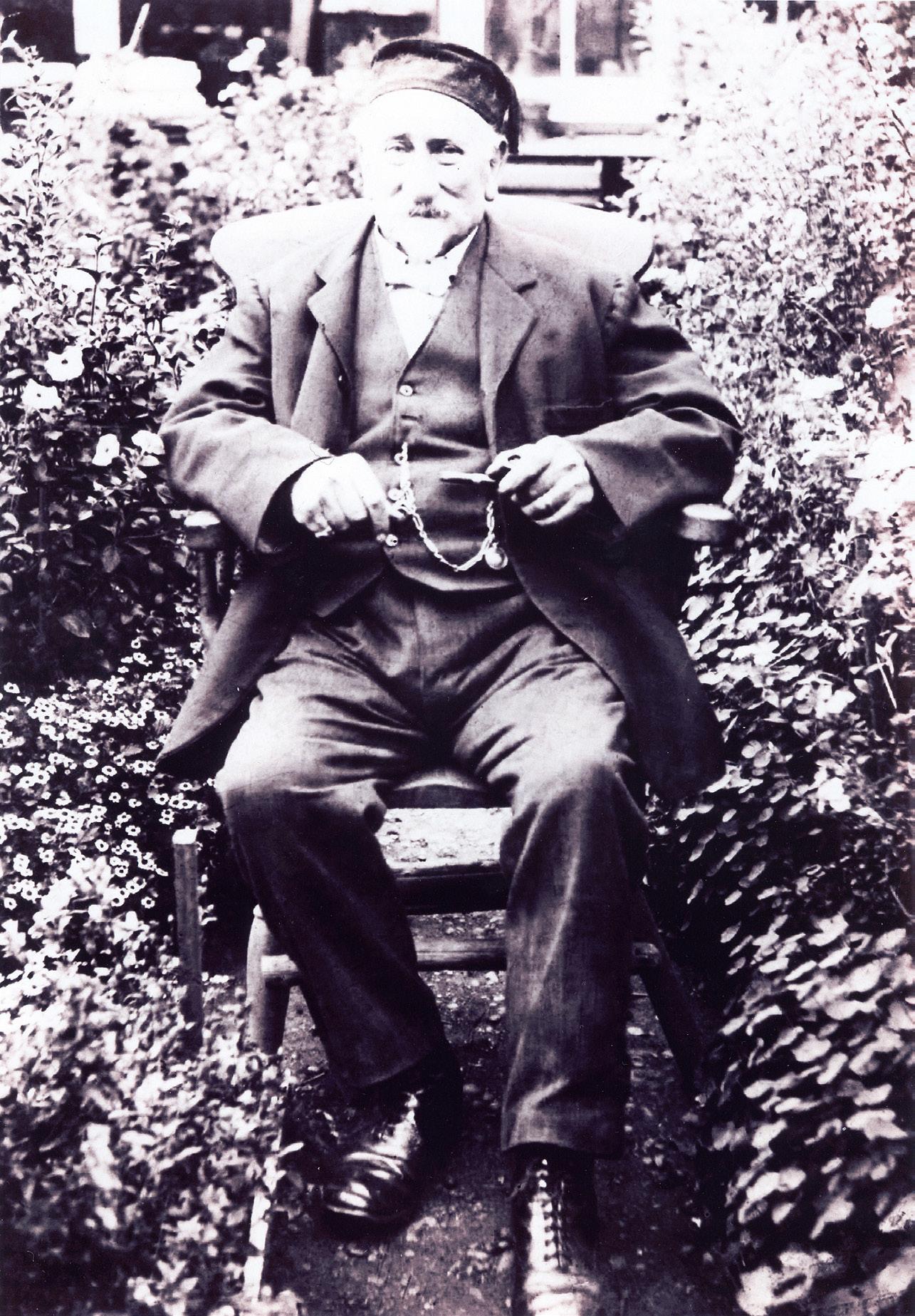
My grandfather was Albert Edward Parrish (AEP) born on 3 May 1904 at 3, Dennison Place, Mile End, London E, and married Harriet Alice Gaylard on 21 November 1891. His father was John Parrish, a carpenter and later a builder, architect and surveyor.
Probably because of numbers and geographical reasons, I was always closer to my father’s side. I had grandparents, uncles, aunts and cousins all within walking distance or a bus ride so the relationships were much closer. Before going back into the family tree, it might be worthwhile just giving an overview of my father’s generation. Aunt Grace was the eldest, born on 30 December 1893, she married George Hawks They had no family and she died on 21 August 1987.
Uncle Fred was the oldest son, born on 22 June 1895. He served in the first World War and married my Aunt Lily, who was a New Zealander, on Christmas Day, 1920. They had three children, Joyce Lillian, born 26 October 1922, who married Bernard Stanley Adams on 20 October 1945 at Chigwell Church, Essex. They both served in the Royal Navy during the Second World War. After emigrating to New Zealand with
The next child was Doris Valerie, born on 23 May 1926 in New York where Uncle Fred and Aunt Lily lived for a time. Doris married William Bruce Worrall, a farmer, on 14 April 1951. They had two children, David Bruce, born 30 September 1952 who married and had three children, Jason Bruce, Joanna Elizabeth and Daniel William. They also had a daughter, Denise Joy, born 1 October 1954 who married and had one daughter, Alexandra Rebeka.
The third child was John Frederick, born 17 August 1931, who married Colleen Holt on 2 June 1972. They had four children, Stephen, born 16 April 1963 who married and has a daughter, Emma, and a son, Matthew; Michael who lives in Australia, born 24 September 1965, married with a son Jack and a daughter, Ellie; Lisa, born on 4 November 1968 and Melinda, born 15 December 1972. Cousin John became a Bank Manager but sadly passed away on 1 June 1990.
The next son was John Cecil (Uncle Jack) born 12 March 1901, married Edith Ellen Morley on 15 September 1935 and he died on 9 April 1994. They had two children; the eldest Barbara Jean, married to Albert John Moore who had three children, Keith John, Peter Graham and Sally Jane. Geoffrey was Uncle Jack’s son who moved to Australia, married and has one daughter.
Next we have Uncle Bob (Robert Victor), born 25 July 1902 who married twice. Firstly to Josephine Laura Briscoe. They had a daughter, Diane Josephine, born 10 June 1933, who married Graham Mayn in New Zealand. They had three children, Lisa Joanne, Simon John and Joanna Louise.
Uncle Bob’s second marriage was to Rita Mavrakis in Greece on 17 June 1946. Rita had one daughter, Yvonne, from her previous marriage. They had a son together, Alan Robert, born 13 September 1947, who had three daughters by his first marriage, Julia Rita, Joanna Teresa and Lisa Jane. He married for the second time to Janice Bickford on 14 June 1997. Uncle Bob and Rita also had a daughter, Liana Rita, born 2 September 1952 and she has a son Matthew Robert Wright and daughter Tracy Suzanne.
The youngest son was my father Archibald Lionel Parrish, born 3 May 1904, at 120 Sixth Avenue, Manor Park, London E12. He married my mother on 11 August 1928 (certificate and wedding photograph opposite).
My father died on 16 December 1993. My mother died on 9 June 2000. She missed her 100th birthday by less than two months. They both passed away in the Eastbourne District General Hospital and were cremated at the Eastbourne Crematorium, where their details are recorded in the Book of Remembrance. We also have had a Presentation Seat sited in a beautiful position on Eastbourne seafront. It is on the Middle Parade, adjacent to lamppost 19. The inscription reads, ‘IN MEMORY OF ARCHIE PARRISH 1904-1993 AND MILDRED PARRISH 1900-2000. They did enjoy the Eastbourne seafront so it is nice that there is a lasting tribute in such a delightful place.
Apart from me, my parents had an earlier son, Norman Archibald, who was born on 29 September 1929, at 36 Templeton Avenue, Chingford, Essex. Sadly, he died on 15 November 1929 and was buried in Woodgrange Park Cemetery in the family grave.
Having brought the family details towards the present day, it might be worthwhile looking back to earlier generations before we proceed with the autobiography proper. To pick up the story, we should go back to my paternal grandfather, Albert Edward Parrish. As we mentioned, he was born on 10 March 1870 at 3 Denison Place, Mile End, London. I don’t have full details but I know that my father said the he started life like others in the family, in the building trade. Apparently, he was an expert bricklayer and laid up to 1000 bricks per day regularly. If one thinks about it, this is a phenomenal output. In a 10 hour working day, he would be laying 100 bricks an hour non-stop – one brick every 36 seconds. Taking into account comfort
1928 wedding certificate of Archibald Lionel Parrish and Mildred Lucy Salter

1928 wedding of Archibald Lionel Parrish and Mildred Lucy Salter
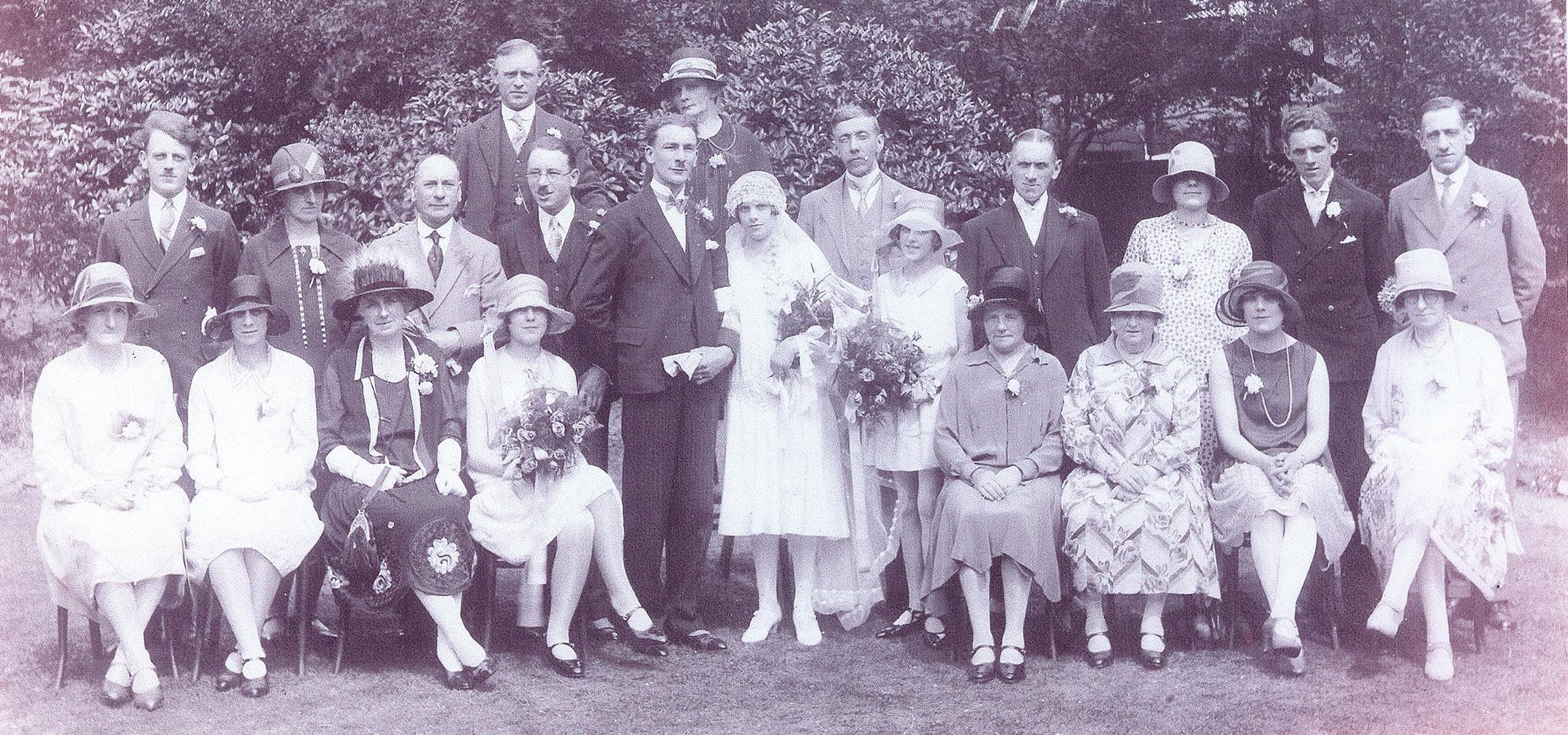
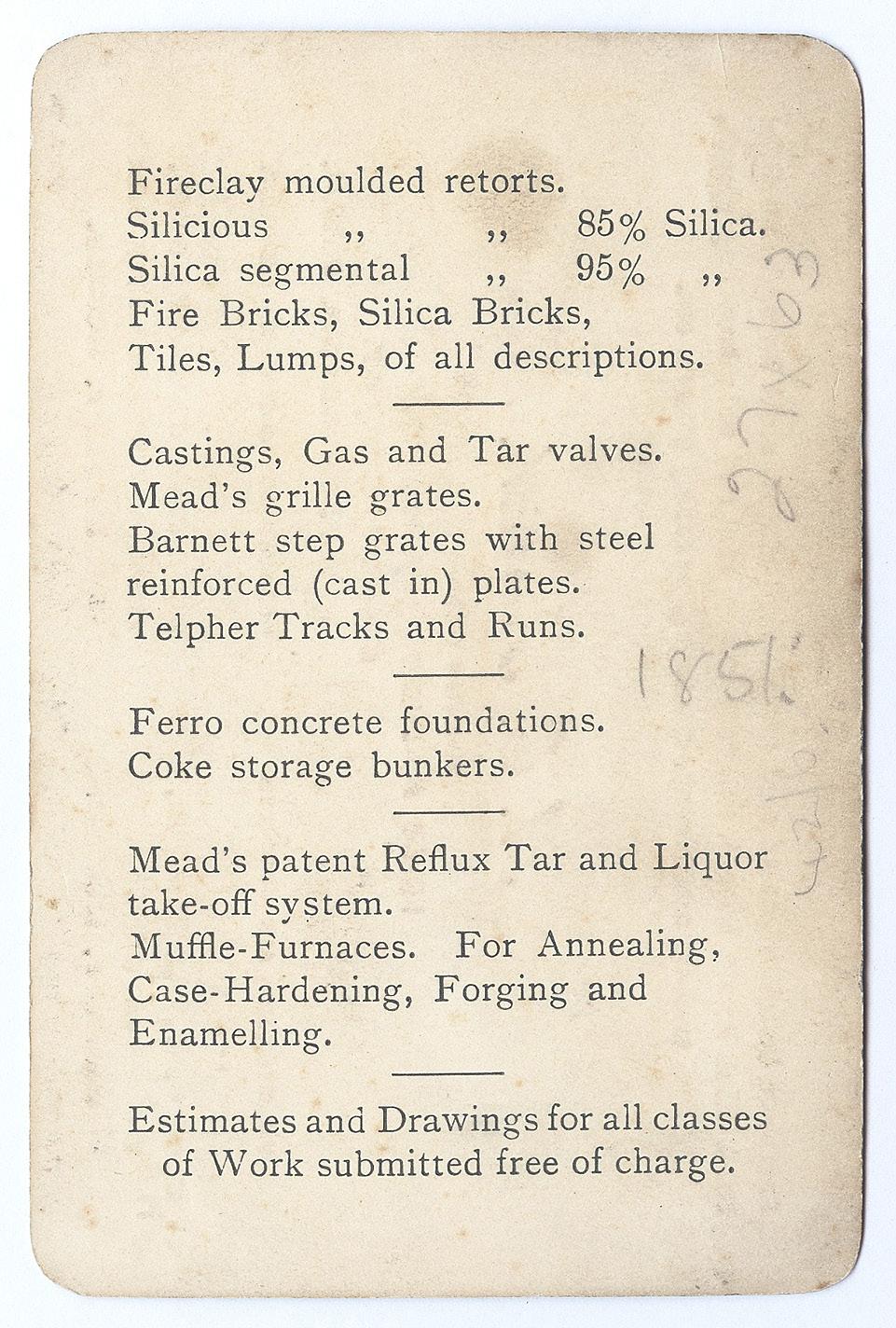
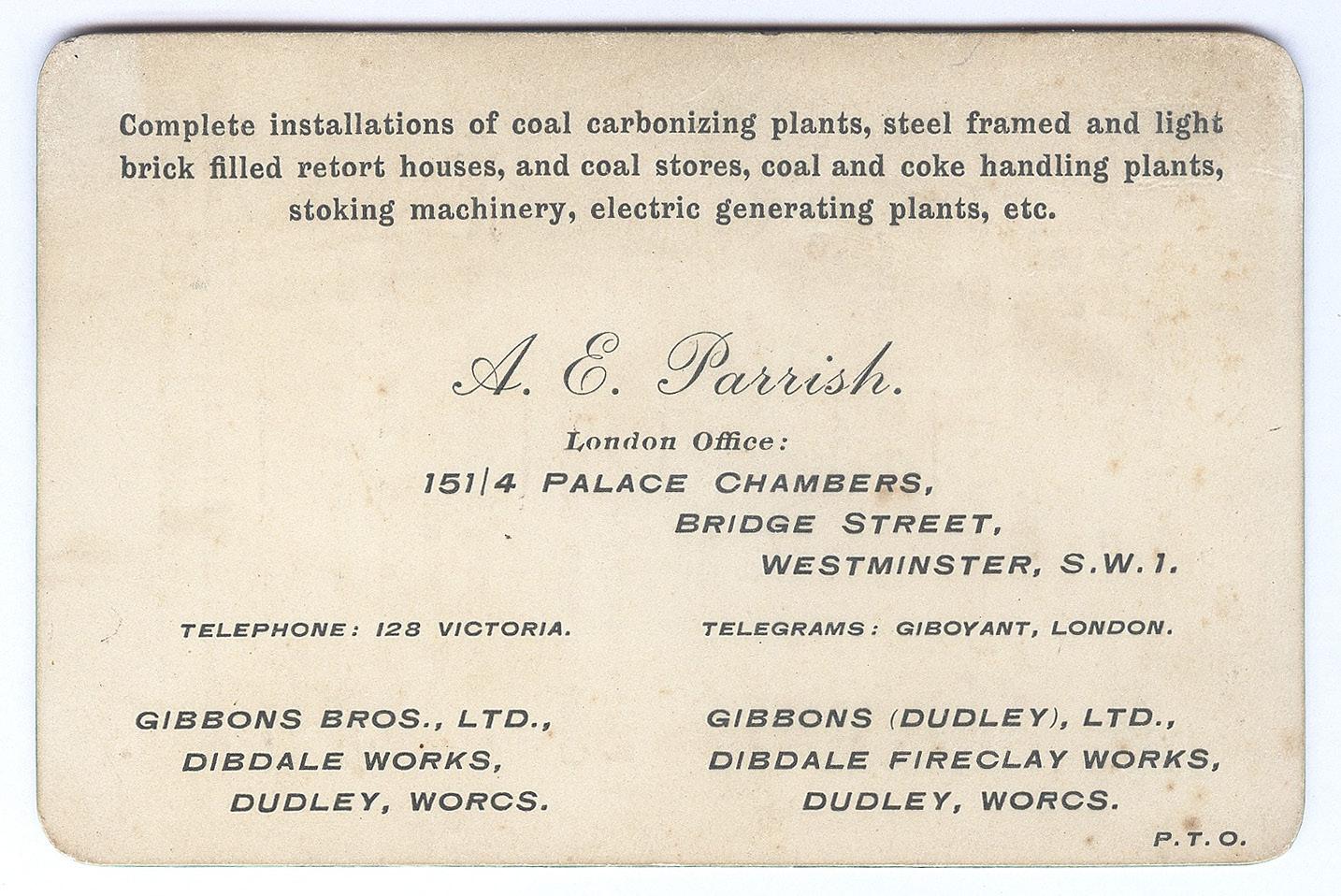
Security wartime pass issued to Albert Edward Parrish

Perhaps I should explain as this is now historical, but originally lighting and heating was powered by coal gas. This was before the days of electricity. Apart from homes with their gas mantles – the equivalent of a light bulb for a gas light – you may have seen pictures of lamplighters going round the streets with their long poles with which they reached up to the street lights to turn on the gas and light the lamp. This was done every night, and every morning the lamplighter had to turn them off. In those days, labour was not expensive!
The coal gas was obtained by heating coal in a metal tube to the point where it released the gas and could be collected and stored. The storage ‘containers’ were called gasometers and are still used today for North Sea gas. The metal tubes were called retorts. The partially-burnt coal was called coke and was sold for use on furnaces, in boilers and even for domestic fires. It was cheaper than coal because the gas had been extracted. It is interesting that one of the most descriptive company names ever devised was the Gas, Light & Coke Company – a name which I clearly remember as they supplied our gas at home. Their product produced gas, provided light and fuel for burning, as the company name stated.
The connection between this apparent deviation and the family story is that my grandfather, starting as a humble bricklayer, worked his way up to become an acknowledged retort and gas engineer and finally became the senior representative of Gibbons Bros. His work was not only limited to this country. I have a postcard sent to him at the Bresso Tuscan Gas Works at Bari, Italy, in September 1909. It was sent by my grandmother and the postcard shows a classroom of children. My grandmother asks my grandfather to find which one is my father! More especially I have a silver pocket watch presented to him on 26 November 1916 by a company in Argentina where he had been sent to give advice. In the UK, he travelled the country in his chauffeur-driven car, visiting gas companies providing advice and selling gas extraction equipment. Such was the company’s need for his knowledge, that he was brought back from retirement at 70. I do have a pass (opposite) issued to him to allow him access to the Wandsworth & District Gas Company dated 21 May 1940 when he was in his 71st year. He died when he was 90 and right up until that time, his firm would send a car once a year to take him to have lunch with the directors.
I know nothing of his boyhood, but my first contact is with a rather interesting artefact given to me by my father. It is an envelope containing a pair of cufflinks. On the envelope is written the words, ‘Links Given to Me by Dear Alice Before our Marriage – My 21st Birthday’. His 21st birthday was on the 10 March 1891 and they were married on 21 November 1891. I have the marriage certificate and it is interesting to see that the address of both my grandfather and grandmother (Alice Harriett Gaylard) is given as 117, Broadwalk. They were married in Christ Church, Southwark in the County of London.
The marriage certificate is worthy of study as it shows my grandfather’s ‘Rank or Profession’ as bricklayer and through later certificates we can chart his progress. The certificate shows his father, John Parrish as
Cufflinks given to my grandfather, Albert Edward Parrish “Links given to me by my dear Alice Before our Marriage My 21st Birthday” (9ct gold, hallmark Chester 1881)
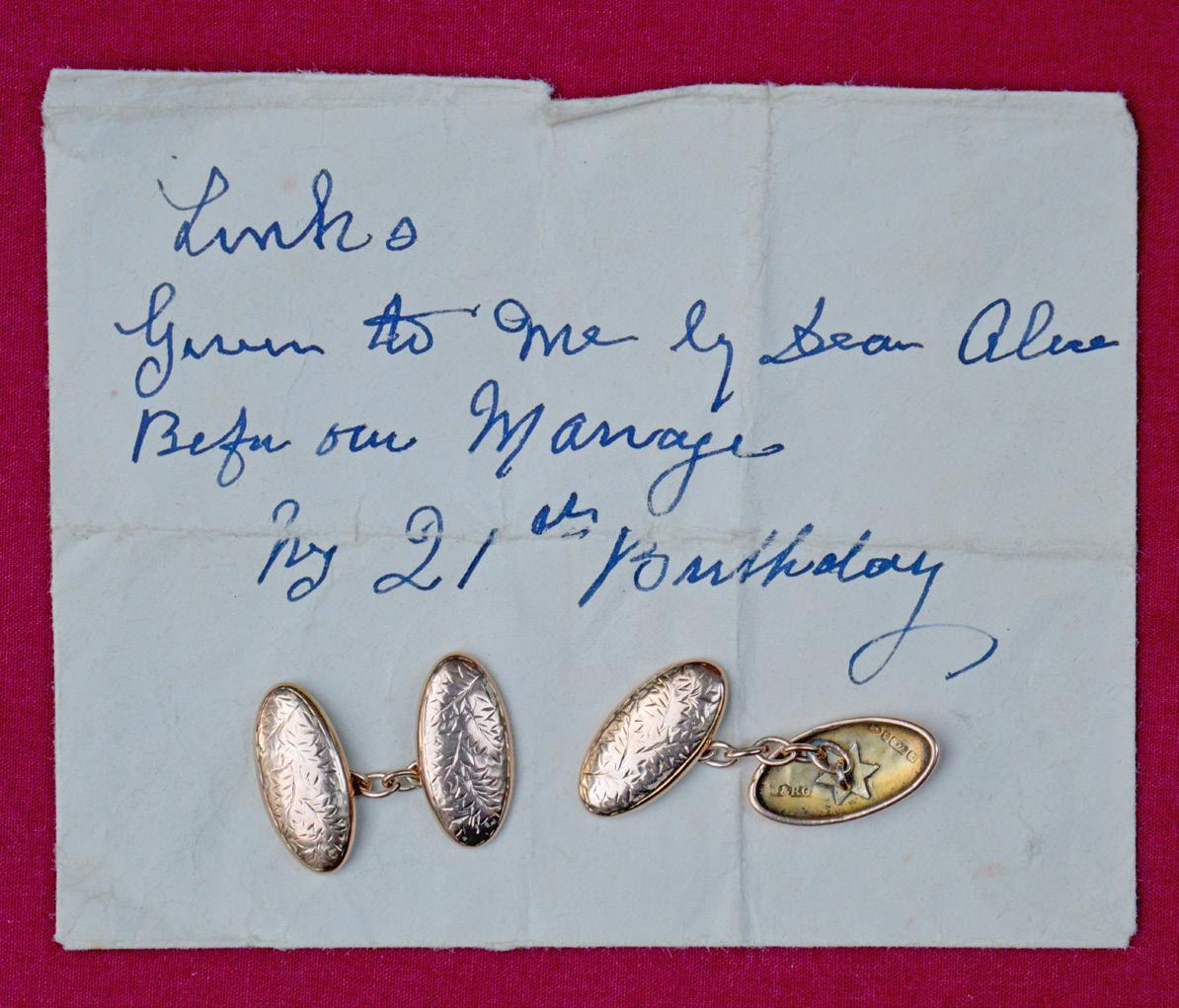
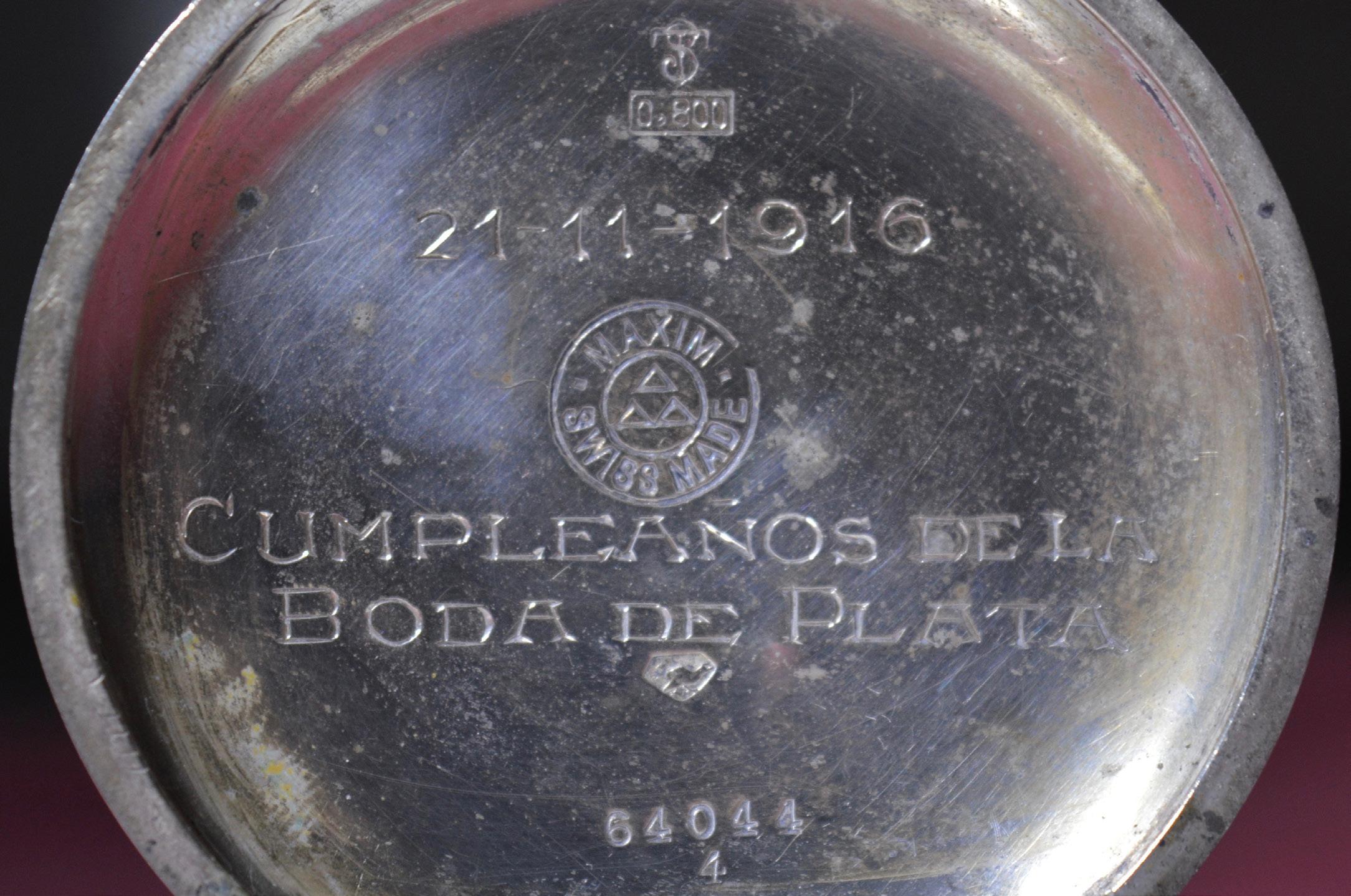
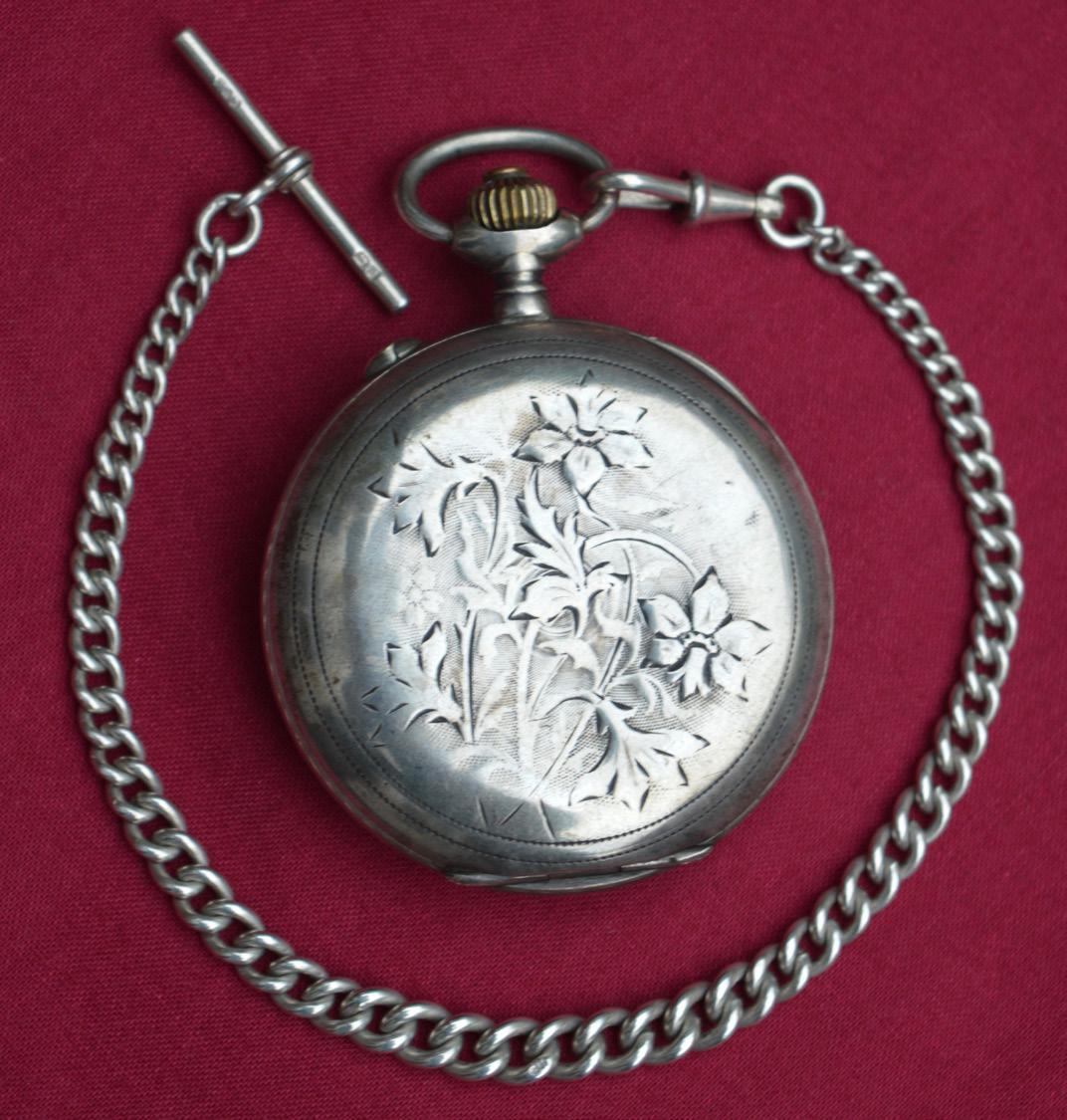
Above and below: Silver pocket watch and chain presented to Albert Edward Parrish, 21 November 1916 in Argentina following technical visit.

Cloth-backed certificate of 1859 wedding between great grandfather Thomas Kent Gaylard and Martha Forrest. Note: my great, great grandfather was a veterinary surgeon and a publican!
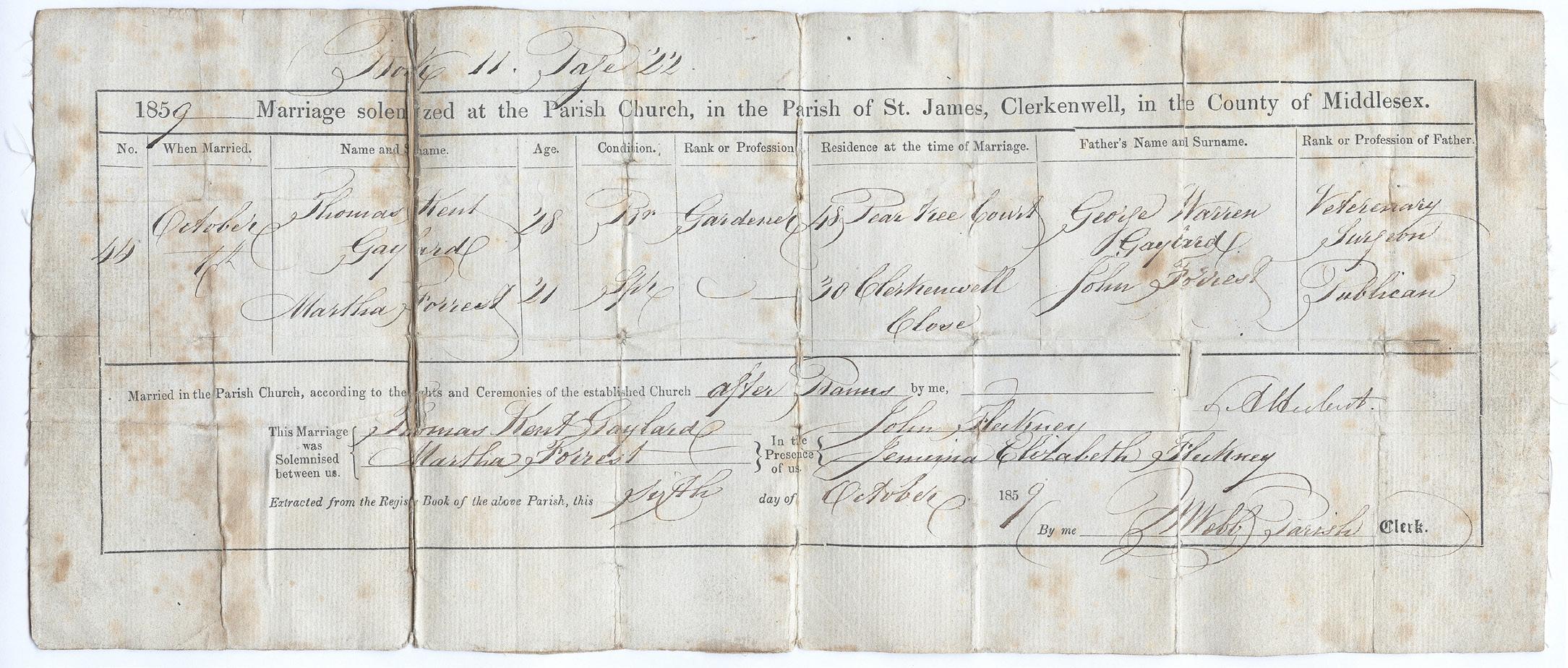
1891 wedding of Albert Edward Parrish and Alice Harriet Gaylard, my grandparents
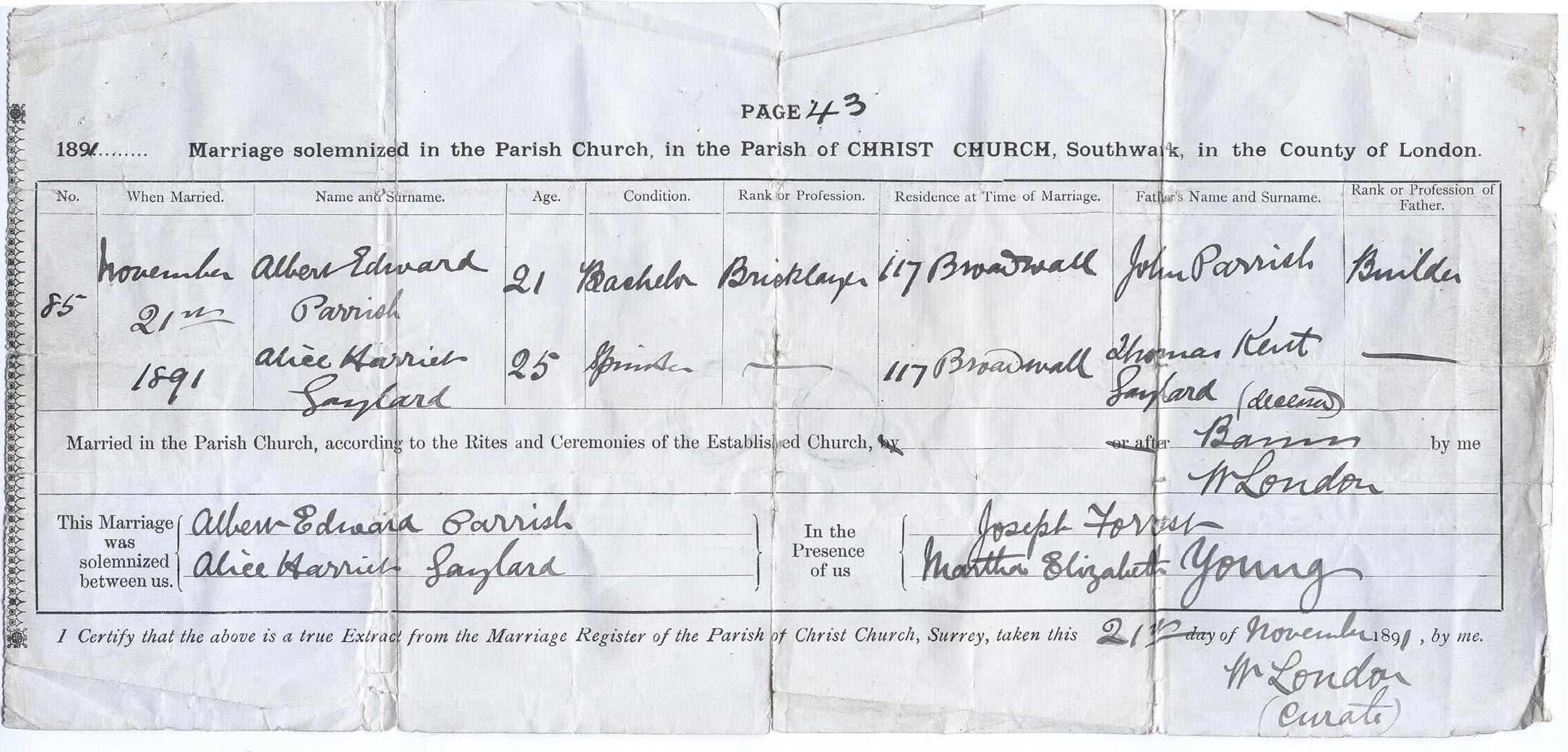
‘Builder’. The marriage certificate shows Alice Harriett Gaylard’s father as Thomas Kent Gaylard (deceased). He was born in 1831 and married Martha Elizabeth Forrest on 6 October 1859. The witnesses were Joseph Forrest (uncle) and Martha Elizabeth Young. It would appear that after Thomas Kent Gaylard (Alice’s father died – he was under 60), her mother must have remarried. I happen to have the marriage certificate of Thomas Kent Gaylard and Martha Forrest. He was 28 and she was 21. They were married St. James Church, Clerkenwell, a lovely Wren-style church. He was a gardener and lived at 48, Pear Tree Court. His father was George Warren Gaylard, a veterinary surgeon. I have tried to trace him through the Royal College of Veterinary Surgeons but there is no record. Apparently, this is not unusual as there were a number of professional bodies at the time and many just trained as apprentices like doctors. Martha Forrest lived at 30, Clerkenwell Close; her father, John Forrest, was a publican.
Five Forrests: Joseph, Tom, Nancy, Martha and Howerd – relatives of Alice Harriet Parrish, my paternal grandmother
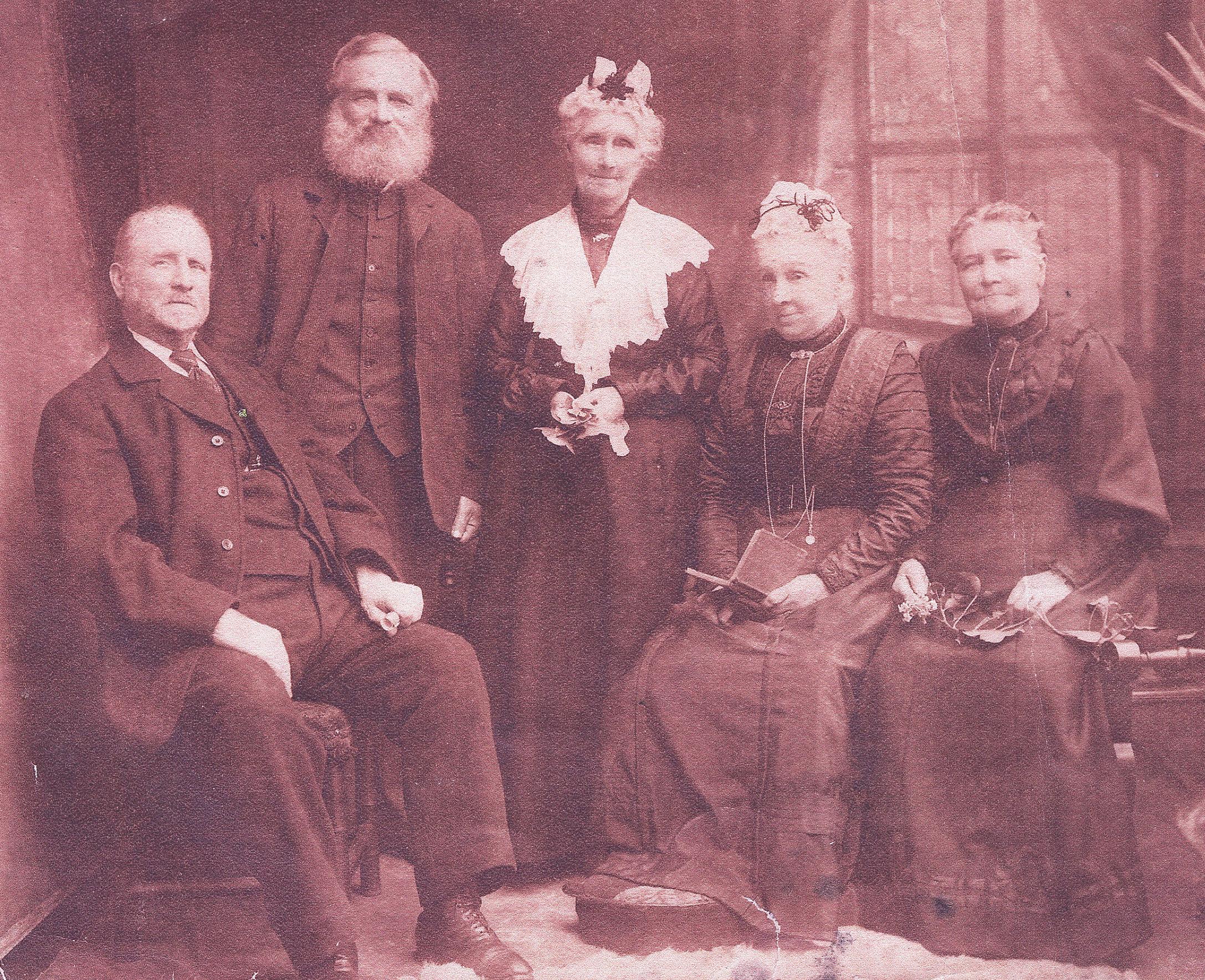
Of one thing I am sure. My grandparents’ marriage was a very happy one. They were married in 1891 and between 1893 and 1904 they had 5 children. Even in my grandfather’s later years, after he had been married for the second time for a considerable period, he would always speak with great affection about ‘his Alice’. Likewise, my father had great love for his mother, which never diminished. I am fortunate to have a large, oval-framed and coloured photograph of Alice Harriett Parrish nee Gaylard. It is obvious that she was a very elegant and beautiful lady. How I would love to have met her. Even through the photograph, I feel we know each other and I feel she is here as I write. This may seem strange to you, but I assure you that it is true.
c 1920 Paternal grandparents Alice Harriet and Albert Edward Parrish
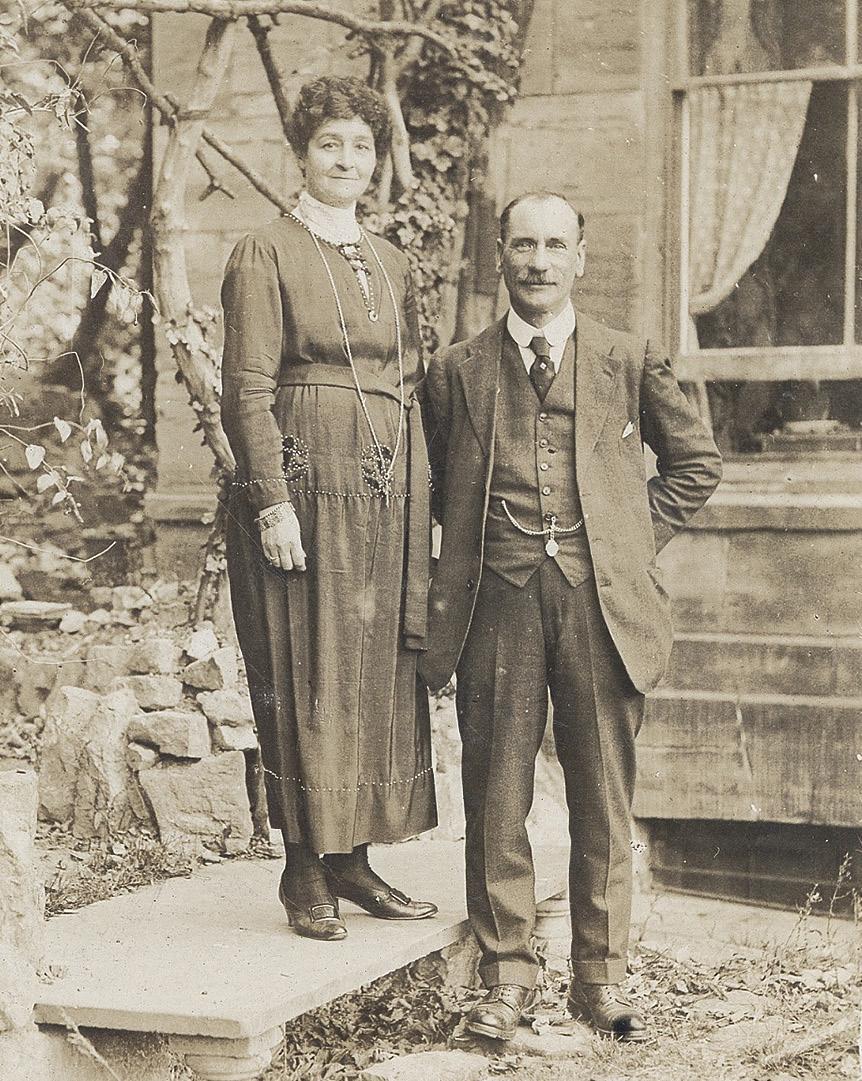
c 1926 My grandfather Albert Edward Parrish and Paddy

Sadly, this love story came to a tragic end on the 8 November 1922 when, at the age of 56 (she was born on 7 November 1866), one day after her birthday, she was killed in an accident in Ilford High Road. It is interesting to see that the death certificate gives his occupation as a Gas Engineer which indicates his progress. The cause of death is given as, ‘Accidental Injury to head caused by being knocked down by a motor car on 8.11.22’. Apparently, she walked out from behind a bus and was hit by a car. When one thinks how few cars there were in those days, it seems surprising that such accidents could occur.
1922 my paternal grandmother
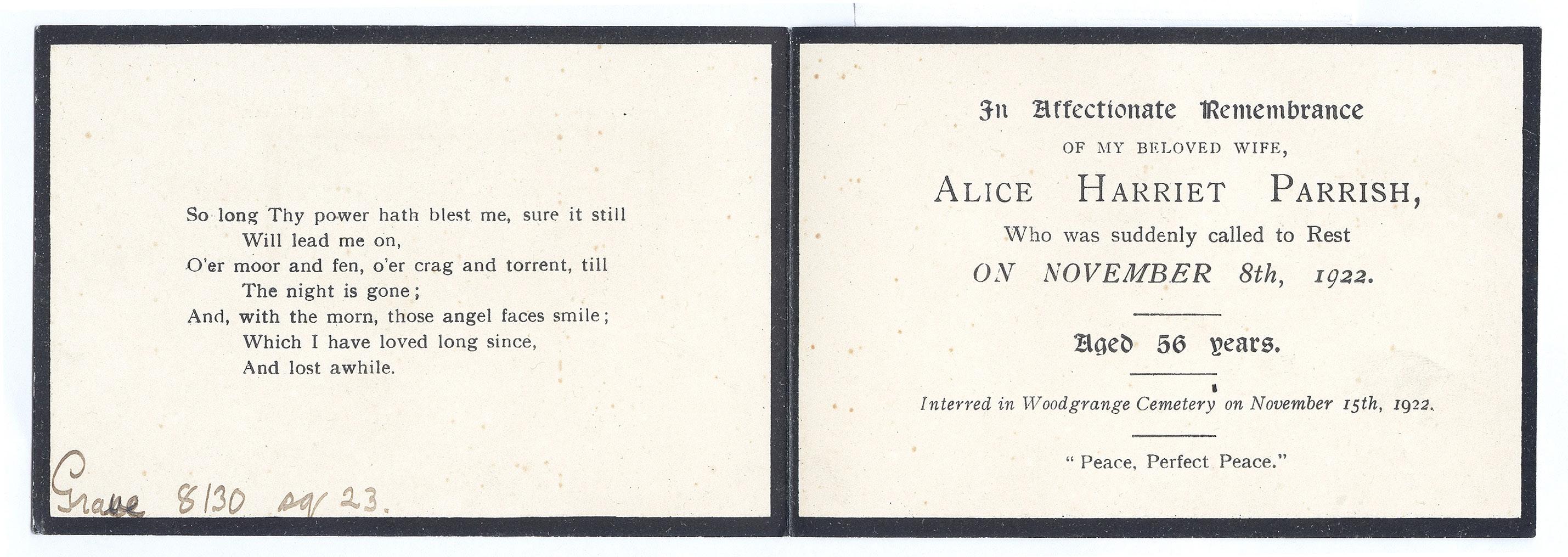
She was interred in Woodgrange Park Cemetery on 15 November 1922. The service was held in the Strone Road Spiritualist Church, Forest Gate, London, E.7. and according to a cutting from the local paper, there was a very large attendance and a long list of mourners is given. This is the first indication that I had that there was any interest in spiritualism in the family, and yet the newspaper cutting states she was well known locally in the spiritualist movement. Strangely enough, among my father’s effects, I found that in 1921 he became a member of the Lyceum Guild and, in 1921 and 1922 he passed the Grades 1 and 2 examinations in the British Spiritualists’ Lyceum Union.
It does seem surprising that after 31 years of marriage, less than a year later, he remarried. A marriage certificate shows that on 29 September 1923, he married Harriett Sarah Shone at All Saints Church, Goodmayes, Essex (the same church where we were married some 31 years later). His occupation is given as ‘Traveller’ and they lived at 17, Arundel Gardens, Goodmayes. At the time he was 53 and his new wife was 49 and a widow. Her father’s name was William George Parrish, a builder, although there was no family connection. Strange she should have the same surname and her husband was a builder – there are still Parrish Builders in Essex and probably related. Harriett Shone came from Lancashire and never lost her accent. It was apparent that she had a very good background and was used to entertaining and acting as a hostess. Her food and presentation were excellent and she would lay on superb dinner parties, although I was too young to be involved. She had one son who was killed in the first world war, and another, Norman, who had been very well educated and was at a relatively high level in the Civil Service as a diplomat. As a pre-retirement post, he was made manager of the Camden Town Labour Exchange which was one of the largest in the country. I remember at family gatherings Norman was always in demand to recite from his extensive repertoire of Shakespeare which was beautifully rendered despite his Lancastrian accent! He was an impressive man with a military bearing and great presence.
One other witness on their marriage certificate was E.J.Parrish. There was great uncle Edgar, my grandfather’s brother. I met him on a number of occasions and he was present at grandfather’s 70th birthday party. He was a small man with a shock of white hair. Always the perfect gentleman, he would rise when you entered the room, shake you warmly by the hand and say, “Delighted to meet you” – and he meant it!

My grandfather spent many happy years with his second wife, Paddy, as she was known. There was no doubt in my mind that this cultured lady had a strong influence on my grandfather and I tend to think of her as the Grand Dame. She adored Pekinese dogs and at one time had two. Can you imagine this tall, upright and elegant lady walking along the promenade dressed in her luxurious fur coat, Pekinese under one arm and black, silver-knobbed cane in hand? I am not sure when she passed away but it must have been in 1957/8 so they had about 35 years together. She always kept a very good table and if we went to visit them (unannounced) on a Sunday afternoon, we were sometimes invited to stay for supper. On to the immaculate lace tablecloth would come cold meats – a loin of pork with crackling, a rib of beef and possibly some ham on the bone. There would also be potatoes, salad and pickles. Great meals!
Aunt Grace was the eldest and she looked after her younger brothers. It was said that if any of the brothers were set upon, Grace would sort them out. My father would tell me that if any boy hit him – remember he was the youngest – he would only have to tell Grace and she would find the culprit and deal with him. In fact, I was told that whether it be park or school playground, the call, “Watch out, Grace Parrish is coming”, would result in panic and pandemonium, boys and girls alike. She must have been quite something because she could terrorise bullies either singularly or in gangs.
My father went to Loxford School in Ilford. From my own recollections, it was not considered a good school. It had the infants and junior school from where the children took the Scholarship (11+). If they passed they would go on to local grammar schools, but if they failed they would go into the senior school. You have to understand that in those days there were no comprehensive schools. If you did not pass the Scholarship you were regarded as below standard – I’m trying to be kind here – and were committed to a low standard of education until you left school at 14. Yes, the system in those days was to leave school at 14, get a job if you could and then work your way up the ladder. Most boys would start as tea boys, messengers or, if they were lucky, apprentices.
I don’t believe my father passed his Scholarship because he was sent to Clark’s College. This was a private school in Cranbrook Road, Ilford, which took pupils who, for whatever reason, had failed to get into a grammar or equivalent school. At 13, children who had failed the scholarship had another opportunity to re-sit for grammar school entrance. I think my father finished his education at Clark’s College.
He left school at 14 as was the norm and went to work at a men’s outfitters and tailors, H G Wackett, in Ilford High Road. He started sweeping the shop floor, cleaning the windows, making the tea etc. Bosses used to be very harsh and unkind in their demands on these young boys and girls and often would exploit their youth and ignorance. They would send them on stupid errands to make fun of them. To be sent to the garage to buy a pint of elbow grease was quite usual. The lad, being new, ignorant and probably fearful, would go, get laughed at by the garage man then get his leg pulled when he got back.
Of course, in those days there were many unemployed with men coming out of the Services after the Great War so if you got a job, you endeavoured to keep it whatever the cost. That is probably why my father stayed in the men’s clothing business all his life and would never consider changing firms – security was everything. If you had a job, keep it. In later years he could never understand me if I wanted to change companies.
I can remember one funny story against himself which my father would recount with much laughter. He was about 18 and had been invited to a firm’s annual dinner which was held in Anderton’s Hotel in London. Our naive country lad (Ilford was country then) went to London on the train, got to the hotel where there was a free bar. Now apart from the odd beer, this was an opportunity so he set to with gusto. Soon he got woozy and the legs got weaker. He had some food – he thinks – then left the hotel and somehow got to Liverpool Street Station and reached Ilford.
One of the interesting things about this type of writing is that one can get distracted into various avenues. The memory is a wonderful thing and when stimulated will lead one into all sorts of reminiscences which have been locked away for many a long year. So it is here. We have somehow moved from my grandparents to my aunt and uncles and then to my father. So let’s get back to my grandparents.
I suppose I really adored my grandfather although I can’t give any reason for it. Perhaps, because he was older and obviously the head of the family and treated with respect by his children. Nevertheless, he would still be quite outspoken if they did anything he didn’t agree with and there were times when an argument would ensue. My childhood was in the last stages of the Victorian era when children were expected “to be seen and not heard” (how many times did I hear that phrase). If my grandfather or grandmother told me to do something, I did it – no questions and no discussion and no reason why. As I grew older, however, the situation mellowed and towards the end of his life, my grandfather and I became friends. In short, I thought he was a great guy and I still think of him on his birthday, the 10th March.
When I was born, they lived in 58 Water Lane, Seven Kings. It was a bungalow with a large garden. Although I was taken there as a baby, I have no recollections. The first home I do remember was in Fencepiece Road, Barkingside. It is on the right just up from the junction with Tomswood Hill. The house was an end of terrace semi-detached and as you entered Fencepiece Road, there was (and I suppose is) a bay window in the side, halfway up the stairs. In that window stood a large china donkey which filled the bay so it was easy to recognise the house. That donkey still exists and now resides with the New Zealand branch of the family where it was sent after my grandfather’s death. I remember nothing else about the house although I must have been there on a number of occasions.
The house I do remember and for which I had great affection was in Romford. It was called ‘Heaton Moor’, no doubt Grandma Paddy’s Lancastrian influence here, and was at 133 Mawney Road. This was a large, semi-detached house of ample proportions. On entering the front door with its large window on the left, one was in a spacious hall. The staircase terminated in a square, banistered dais at the foot. Hanging on the wall in that area, as you went to mount the stairs, was a Vienna wall clock which seemed to greet visitors with its steady tick. That same clock now carries out the same function at the foot of our stairs. It is a precious memento. I don’t know where he acquired it or many other items in that treasure-trove of a house, but I know he used to frequent auctions and Paddy didn’t know what he would bring home next. Just after the war in 1945, my grandfather purchased a pony and trap (he was in his mid-seventies then) and my grandparents would trot over from Romford to see us – quite a few miles.
On one occasion, they brought the Vienna clock and gave it to my father. He, not being that interested, put it in the shed where it remained for some years until I offered to get it back in working order. The agreement was that we should share it. It went on my wall and my father often asked when he was going to get his share. I think he was secretly pleased, though, that the clock was with me and would be cherished.
Back to their home and proceeding onwards, there was a large drawing room on the right with a fireplace in the corner. Standing up and leaning against the fireplace was a poker – well it wasn’t actually a poker but obviously something else obtained from a job lot in an auction. I have to admit that the poker now stands upright in our fireplace and is no longer used for poking the fire as modern houses no longer have open fires – sadly. That poker always fascinated me as it is in the form of a short sword. On examination, it has an ivory hilt with a silver cross-guard and pommel. On the cross-guard is a very fine hallmark dated London, 1794. The blade has markings along the length. My fascination resulted in me sending it to Wilkinson Sword for their opinion. One of the directors replied that it is a mid-shipman’s dirk made from a cut-down Spanish rapier blade of the 16th century. Apparently, mid-shipmen at that period used to have these dirks made specially for their use – presumably they were decorative!
1946 My grandfather and Paddy with their trap and Susie
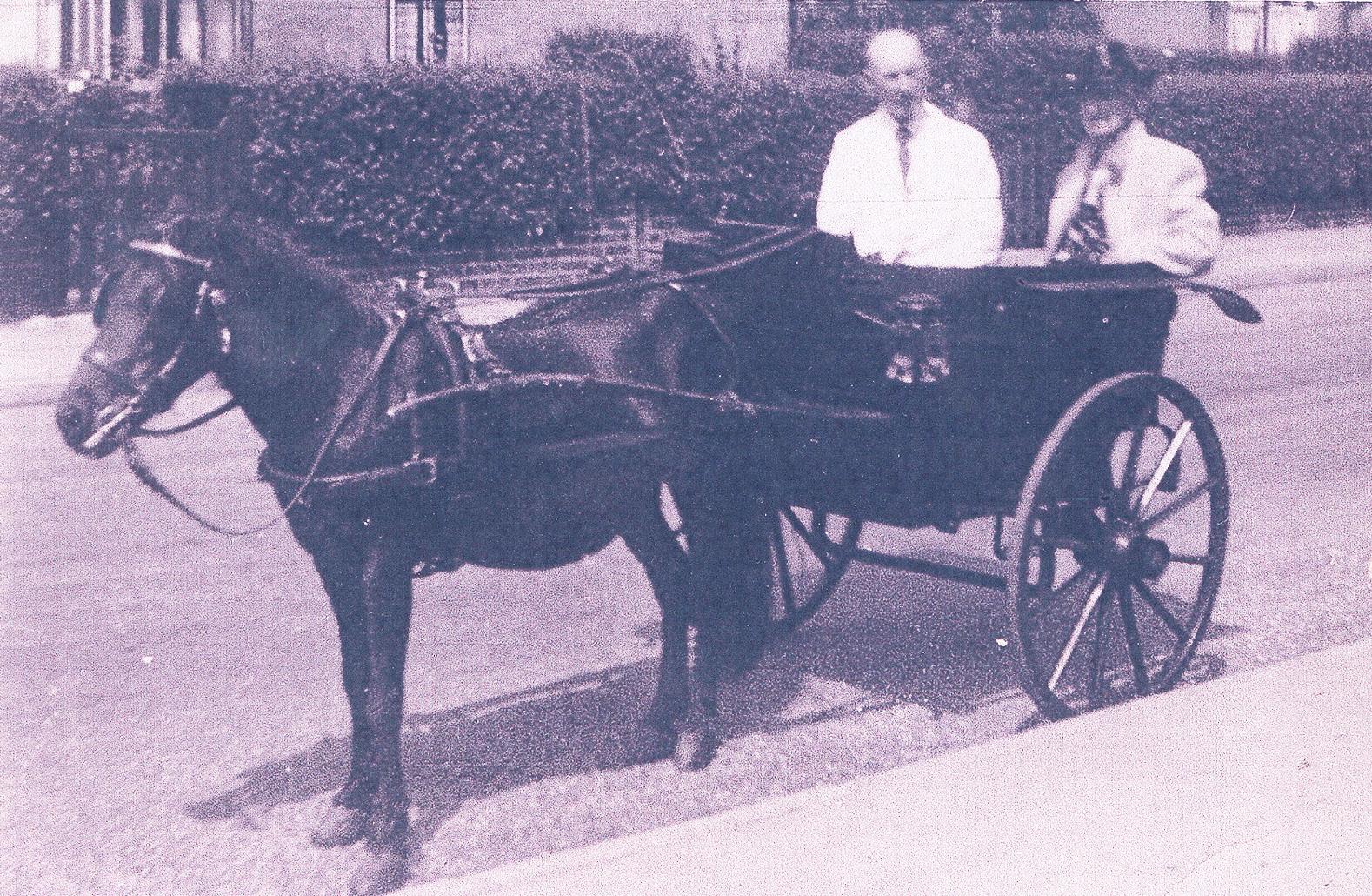
My grandparents: Albert Edward Parrish and Harriet (Paddy) Parrish on our wedding day, 3 April 1954
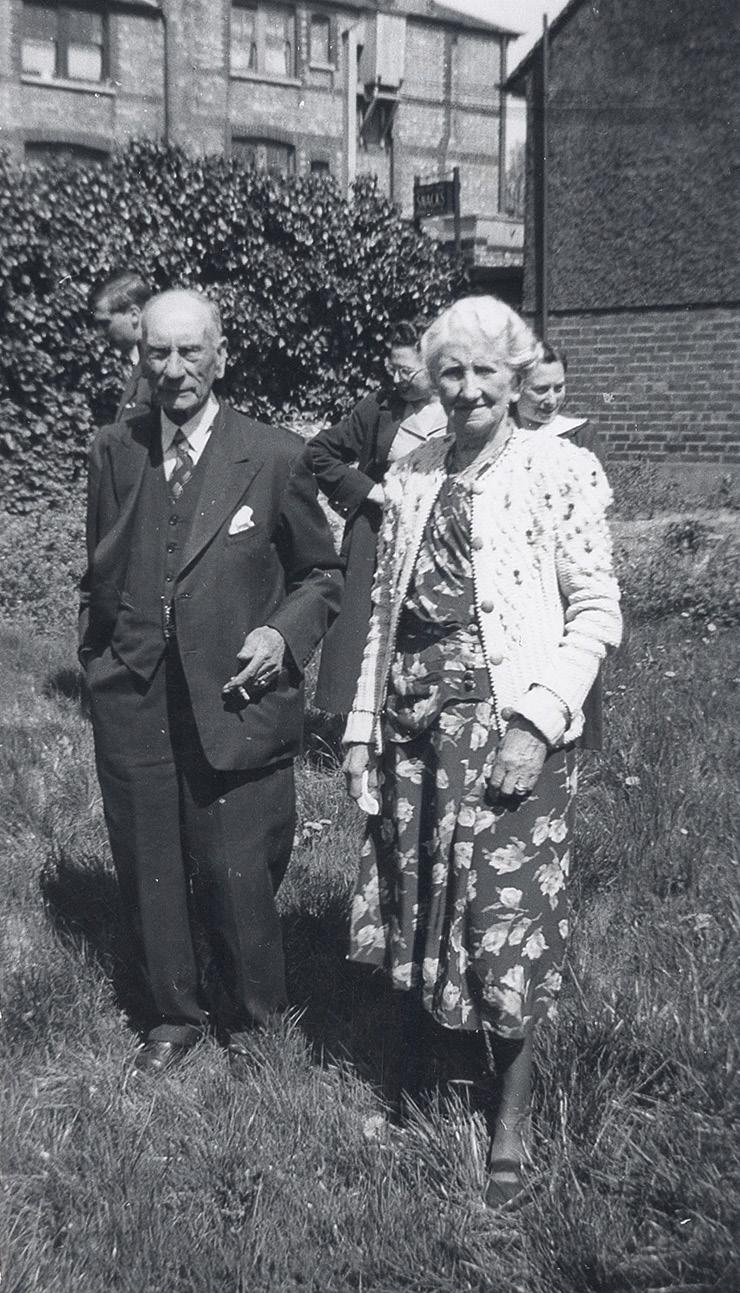
My grandparents' drawing room was well endowed with Victorian and Edwardian furniture, pictures on the walls and decorative mirrors. There was a central table complete with chenille table cloth and a long mahogany sideboard on which stood various items of cut-glass including a three decanter Tantalus plus silver chafing dishes etc. The silver-topped, cut-glass claret jug is with us. Of course there was the usual jardinière complete with aspidistra as well as side tables covered with beautiful lace tablecloths. My grandparents had a button-back armchair either side of the fireplace and each had their own wine table. If one could walk into that room today, it would be a time warp for late Victorian England remembering that although we are talking about the ’30s, my grandparents were born in Victorian times so their style was applicable to then.
Carrying on with the tour of the house, by carrying on down the hall, we find that straight ahead is the lounge. A large room with French doors opening on to the garden beyond. This room again was in a similar style to the drawing room and had comfortable armchairs, side tables and plenty of other items plus, of course, pictures on the walls. In those days I had no interest in pictures so have no idea whether they were prints or originals. There is one item of furniture I should mention. It was a small, delicate three piece suite comprising an Edwardian two seater sofa with padded embroidered back and seats, matching armchair and corner chair. The legs, back and arms were so fine and the whole suite was quite elegant. When my grandfather died, it was offered to us but we had nowhere to store it so it went with everything else to be collected by a house clearer. Such a great shame.
There were other items which I should mention. On one table stood a silver stand, which held three bowls. It had curved arms and can be described as extremely graceful. I have never seen one like it anywhere else. The centre bowl is about 8" diameter and suitable for fruit, whereas the other two bowls are about 3" across and could be used for sweets. It makes a wonderful centre piece for a table and could, I suppose, be described as an epergne. We were delighted to obtain this and it has a place of honour in our home.
I promise I won’t go on, but I cannot leave without mentioning one other item of pleasure. It is a George III baluster coffee pot circa 1794. A most elegant pot. These are some of the items ‘rescued’ following the death of my grandfather. My father was an executor and, being totally honest as he was, everything had to be dealt with impeccably so I had to purchase anything I wanted although I was allowed one item. Monies for items purchased went back into the estate.
We’ve started wandering off track again so let’s get back to the house. At the end of the hall, one could turn right and straight ahead was the kitchen, which lead through to a pantry/store room and beyond that a large morning room which served also as a dining room for less formal occasions. The room contained an Aga cooker where most of the cooking was done. Grandmother Paddy’s roasts used to smell delightful and her roast potatoes were crisp and succulent. I spent quite a lot of time in this cosy room as it was the one most lived in. I can remember they had a green parrot named Polly. It was there from my earliest memories and was still there when I was a teenager but don’t remember when it died. I was always being warned not to put my fingers in the cage. At times there were occasional canaries kept which used to sing beautifully.
Also in this room were brass letter scales mounted on a mahogany base with weights which would keep me amused. I would also play for hours with their wooden solitaire board. It was circular, about 9 inches across, the top being able to swivel to reveal the clay marbles which were kept in the base below. This was a warm, sunny room (no doubt helped by the Aga) and one always felt cheerful here.
Upstairs there were four bedrooms with large beds and huge wardrobes. The finest bedroom was the one at the back. Not only was it large, but it had a balcony overlooking the rear garden. Such luxury. One could
The garden was long and contained flower beds, herbaceous borders, a vegetable garden and a large greenhouse plus, of course, lawns back and front. Grandfather was a good gardener and enjoyed it. His tomatoes were excellent, as were his runner beans and salad crops.
Just down the road from their house, on the left, there was a terraced house with a large monkey tree in the garden. In that house lived grandfather’s chauffeur when he was employed by Gibbons Bros. It was interesting to note that he never stayed away from home at night and wherever he travelled, he always insisted on coming back. I was once told that this was because he once had a damp bed. One has to appreciate that in those days there were no washing machines and no dryers. Hotels would tend to wash sheets, pillow cases and towels on a daily basis (this applied to guest houses etc as well) and if it was difficult to dry the linen properly, they could be put on the beds before being fully aired. There was a fairly simple test which my grandfather passed on to me much later, namely, to put a mirror between the sheets. If the mirror misted up, it signified dampness.
Before we leave Romford, I should mention that if one went to the north part of Mawney Road – the other side of the Eastern Avenue – there were some shops and houses. Through a gap on the left, one could go into a field where there was a stable and small coach house in which my grandparents kept their pony and trap. Although he was well into his seventies my grandfather would go twice a day, every day, to look after this pony. Apart from that, he looked after the trap and the tackle. They would go out quite frequently around the Essex Lanes and visit us and other relatives. When one thinks back, it is quite amazing that an elderly man and his wife should adopt such a means of transport and look after the animal and equipment. I cannot remember how long it was before they decided to sell the pony and trap, but they certainly had it for some years.
Time eventually took its toll and they felt that maintaining this large house in Mawney Road was becoming too much for their advancing years. The house had known many family events, one of which was their silver wedding and my grandfather’s 70th birthday. The latter I remember quite well in 1940 and there is a wonderful family photograph including, not only our side of the family but his brother, Great Uncle Edgar and his family. The family photograph includes us all and the table, with its lace tablecloth, includes some of the silver which we now have.
After much searching, they found a bungalow at 5, Dorien Road, Hornchurch and it was here that they spent the remainder of their years. A good proportion of the furniture, went with them so the bungalow was quite crowded. We would visit them fairly often and after I met Maureen, we would both go to see them. We were with them to share the Coronation of Queen Elizabeth II in 1953.
When we were married in All Saints, Goodmayes, on 3 April 1954, they were both present which was quite a privilege as it was the church in which they were married in 1923.
Grandfather and Paddy continued to live in Hornchurch, although she became frail with walking problems and for the last months of her life spent an increasing amount of time in bed. I do not remember when she died but it must have been around 1957/8. Her passing meant that my grandfather, in his late ’80s had to fend for himself and he was quite lonely. He decided to get himself a dog for company and security. As we had a car, we took him to Battersea Dogs Home one Saturday. He chose a small brown terrier named Tony. It turned out to be a wild animal. Maureen and I can well remember the journey home. I felt this dog with its feet resting on the back of the front seats breathing down my neck uttering a low growl. I fully expected a bite but fortunately nothing happened. The dog was equally fierce at home and was not only likely to attack visitors, but did go for my grandfather on several occasions. It was decided that the dog would have to go and fortunately my grandfather found a lorry driver who needed a dog to travel with him to guard the lorry. He was a big chap who could control the animal so presumably everything worked out well.
So my grandfather was back to his solitary life. He would go away in the winter to the Yelton Hotel in Hastings. Then he found himself a lady friend. She was allegedly quite well off, and came from Purley, where she had a large house and had a son who ran a successful catering business. We met her once when the son brought her and my grandfather to visit us at home. Coming up to 90, he decided to get engaged! Unfortunately, the romance was not to blossom as my grandfather died on 25 November 1960, aged 90 years. He was found sitting in his chair by the fire holding his newspaper. It would appear that he had turned on the gas poker to light the fire and the gas poker had gone out. He being fairly deaf (unless you mentioned money!) could not hear it and probably could not smell the gas and so succumbed. The inquest showed carbon monoxide poisoning as the cause of death but mentioned that he had the arteries equivalent to a 40 year old. It is interesting to reflect that his life's work with coal gas should have been the cause of his death.
In his will, he left £300 to the lady friend and I was told that she was not at all happy, apparently expecting a large share of the estate. No one ever saw her again and, as far as I know, she didn’t attend the funeral. Grandfather was laid to rest in the family grave together again with his beloved Alice and my brother.
As a final comment I must say that I enjoyed my grandparents’ company. I always found them kind and willing to share their knowledge and experience. One example occurred when my parents and I were having a meal at their home. Grandmother Paddy, that great hostess whose sharp eyes missed nothing, must have observed my somewhat inadequate handling of my cutlery. I can remember this so clearly. She quietly asked me to leave the room with her. I was intrigued and followed her into the kitchen. She took some plates and cutlery from the cupboard, laid them out, and gently showed me the correct way to use cutlery from the outside in; how to take soup; how to the place a knife and fork a) if one is still using them and b) if one has finished. In those days, waiters were aware of table etiquette and if one put their knife and fork down incorrectly, the plate could be whisked away! I was about 10 at the time and although this lesson only took a few moments, it has stood me in good stead for the rest of my life. Most importantly, when we returned to the dining room, she said not a word. It was our little secret!








